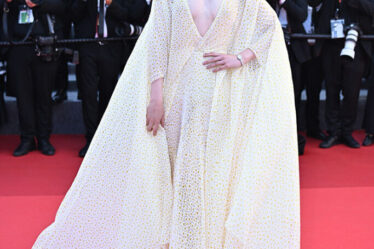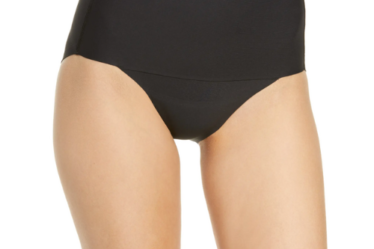
If Gmoney is familiar to fashion insiders, it might be from his collaboration with Adidas on its “Into the Metaverse” NFT collection last year. Or because they’ve seen the anonymous crypto figure in Prada’s Twitter and Instagram feeds, his face obscured by the beanie-wearing, ape CryptoPunk NFT that’s become his public image.
It was his roughly $150,000 purchase of that CryptoPunk at the start of 2021 that helped fuel the mania around the blockchain-based tokens. That August, Fortune named him one of the 50 most influential people in NFTs. His profile as an investor and thought leader in the space has only grown.
Much has changed in the market since. Cryptocurrency prices have crumbled and the value of once-hot NFTs has plummeted as investors anxious about an economic downturn sell off their riskiest assets. In May, a CryptoPunk that had been purchased for $1 million sold for just $139,000. High-priced sales still happen, but in dollar terms, the price floor for CryptoPunk NFTs has fallen about 65 percent since the start of 2022, according to data from NFT Price Floor.
It’s arguably a less than ideal time for Gmoney to launch what he describes as the first crypto-native luxury brand, 9dcc.
Named for the last four digits of one of his crypto wallet addresses, 9dcc is an ambitious, if still somewhat nebulous, undertaking. The brand’s products will only be available to buy with an Admit One NFT, the solo project he launched in May that gave 1,000 holders access to the ecosystem he’s building (while initially free, some of the tokens have since sold for thousands of dollars). Each 9dcc item will also link to an NFT that serves as its proof of provenance. Gmoney plans to build out other utilities, too, including virtual use.
Gmoney, a former equities trader with no training in fashion, admits where it will go is an open-ended question. Learning to design and produce clothing is no small job either.
“Just because I don’t necessarily have a formal background in [fashion and luxury], I’m still a consumer of these products,” he said. “The reason why I’m super interested in tackling it from a crypto-native side is integrating that tech.”
9dcc’s first drop, Iteration-01, will be a T-shirt — not the typical cornerstone for a luxury house. But Gmoney’s aim is to focus on what he personally likes and to do things differently. He wants to reimagine luxury with NFTs built into the foundation, rather than grafted onto an existing business. If the concept of a web3 fashion brand has a future after the crypto crash, 9dcc is what it could look like.
“Luxury is not about selling leather bags,” said Ian Rogers, the chief experience officer at Ledger, which makes hardware to secure crypto assets, and former chief digital officer of LVMH. “It’s about identity and it’s about tribalism, belonging and self-expression. And that is what NFTs are about in this digital world.”
The Road to 9dcc
Gmoney, who is 40, doesn’t give out his real name, preferring like some others in crypto to remain anonymous. But he doesn’t shy from talking about his background.
As a kid growing up in the suburbs outside New York City in the 1980s and 1990s, he took an interest in the stock market, and when he got to high school, he made a deal with his parents to let him invest. (He also started doodling brand logos.) He rode the tech bubble to the top — and all the way back down. Still, he ended up going into finance. He first learned of Bitcoin about a decade ago, but he couldn’t figure out how to buy it at the time. In 2017, he relocated to Puerto Rico, where he met people making good money trading the cryptocurrency, and the next year he went “down the rabbit hole,” as he put it.
During that period, the crypto market was going through another of its periodic crashes. He saw echoes of the dot-com bubble, out of which eventually emerged a number of tech giants, and believed the cycle was repeating with blockchain technology.
At the outset of the pandemic, he started playing the game Fortnite. The first question he got from the 12-year-old nephew of a friend was which skins he owned. Skins are cosmetic upgrades, like outfits or avatars. Initially, he didn’t understand why anyone would buy them if they didn’t provide enhanced abilities. Within a few weeks, he had his own collection.
“I was like, ‘There’s this massive supercycle here where that kid is 12 years old today,’’ he said. “Ten years from now, he’s going to be 22. He’s going to have his own disposable income and he’s going to be totally okay with owning a purely digital asset.”
Everything clicked when he discovered NFTs in August 2020. Because they allow for verifiable ownership of digital assets, he believed they would serve as online versions of the brands and products we use to signal status and taste — “flex utility,” he’s called it. He’s since become a leading evangelist for the technology, accruing over 274,000 followers on Twitter in part thanks to his podcast and his work helping brands like Adidas introduce NFT projects.
9dcc aims to incorporate various capabilities of NFTs that fashion brands have mostly explored in bits and pieces. The Admit One tokens that will allow holders to buy 9dcc merchandise make it exclusive to Gmoney’s supporters, much like brands using NFTs as loyalty programmes. Linking physical clothing to NFTs mirrors various efforts by luxury players to give their products digital identities.
“You could probably count on, for sure two hands if not one, the pioneers, as far as individuals, in the NFT space,” said Brandon Doyle, founder of NFT marketing and consulting agency BarbyNFT and an Admit One holder himself.
The Price of Admission
Gmoney set up the May launch of Admit One as a giveaway to hand-picked members of the NFT community to avoid the frenzy that has marred other NFT launches. I was allowed to claim one, and the process was indeed mostly smooth, except for having to refresh my browser a few times because it was unclear at first whether I had successfully minted the NFT. The token provides access to a members-only Discord server, where people talk about other NFT projects and the state of the crypto market.
The NFTs aren’t free anymore. Doyle paid around $20,000 for his on the secondary market in June. In the past week or so, they’ve sold for anywhere from $18,000 to $25,000. Doyle said Gmoney’s reputation and track record made it worth the price, and he expects the tokens to rise in value. He also hopes holders will get preferred access to future collaborations between Gmoney and brands.
Just as valuable to him is the community, whose members in fashion include people like Micael Barilaro, director of the gaming and collectables business at Gucci, and Dana Taylor, a model with her own web3 venture. He expects they’ll have good perspectives to share, and good alpha — the term for a strategy’s ability to outperform the market.
But Is It Luxury?
The belief that the value of crypto assets will increase motivates much of the fandom in that world. It’s a different motivation than what typically underlies luxury purchases, where only a few items, such as the Hermès Birkin, have any hope of appreciating once they leave the store.
What makes a 9dcc T-shirt a luxury item, in Gmoney’s view, is the attention to detail in the design, materials and make, including the technology. But he also expects the T-shirts of Iteration-01, being the first drop by 9dcc, could become collectables, and he views NFTs as integral to the process.
To get a shirt, Admit One holders will first need to buy an NFT they can then redeem for the physical product, similar to the way RTFKT — the virtual sneaker and NFT brand acquired by Nike last year — has allowed NFT owners to get exclusive physical goods. Each shirt will be outfitted with an NFC tag owners scan to claim a corresponding NFT that serves as proof of authenticity.
Importantly, the NFTs anchor the brand in web3′s decentralised ethos. If the shirts are resold on the secondary market, Gmoney wants buyers and sellers to be able to authenticate the items without needing him as a central authority.
“What we’re also going to do is link it to an NFT wearable in the metaverse,” he said. “We’re talking to different partners because one of those things is interoperability — you know, how many metaverses can you use it in?”
Eventually, Gmoney plans to branch into other items, like hoodies and cashmere sweaters. He’s also talking to some of his favourite artists and creators about future collaborations and said NFTs could allow them to get a cut any time a product they worked on is resold.
Others in fashion, such as Net-a-Porter founder Natalie Massenet, who invested in digital ID company Eon, have begun exploring these ideas as well. How they might work in practice is still being figured out. What happens if someone resells the product but doesn’t transfer ownership of the NFT, or if the NFT is stolen in one of the scams or hacks that plague the crypto world?
“We’re all learning this in real-time,” Gmoney said. “It’ll be like a blank canvas that we can go, do what is needed, learn from and then iterate and build on it.”

Luxury and NFTs as Identity
It’s too early to say how many people will purchase a 9dcc T-shirt, but with only Admit One holders eligible, the brand won’t be generating huge sales among a large audience. Gmoney said he’s managing distribution this way for a couple of reasons. Making the brand widely available would create more supply-chain and logistics challenges. He also wants the products scarce — an approach NFTs and luxury both use to bolster their perceived value and serve as signifiers of status and community membership.
Rogers, who still advises LVMH brands, pointed out that displaying a Bored Ape Yacht Club NFT as your social media profile picture isn’t that different from wearing a Richard Mille watch. Both are ways we indicate our belonging to different groups. He noted it was actually Tag Heuer chief executive Frédéric Arnault who offered that example in a conversation they had.
While the crypto wealthy have become valuable customers for luxury brands, it’s unclear whether luxury shoppers will show interest in a brand like 9dcc.
“Outside of gaming, we are not yet talking about average shoppers [who care about NFTs] — at this stage rather, it is still early adopters,” Sarah Willersdorf, global head of luxury at Boston Consulting Group, said in an email. She added, however, that brands should be experimenting now.
Rogers noted, however, that crypto-native brands could have an advantage if web3 takes off, similar to how upstart beauty labels were able to build businesses on Instagram because they understood social media better than their more established competitors.
There are still debates about the future of NFTs and blockchain technology, with critics including Bill Gates and Tim Berners-Lee, inventor of the World Wide Web, questioning their value. But fashion’s attraction isn’t fading, despite the crypto market’s recent turmoil.
“Ultimately fashion is a community of people that buy a certain brand because they like the things that brand stands for, and that’s what we’ve seen in the NFT space,” Gmoney said. “For me, the next logical step is integrating both those worlds together.”



